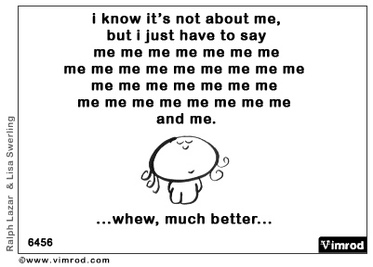
This was an interesting article by Nichole Kelly on SocialMediaExplorer. As someone who works in media, whose job is to promote myself and whose value in part is determined by how many people "like" me, I always endeavor to keep my ego in check. It is only within the past 6-8 months have I really taken a hold of social media as a branding/self-promoting tool. I use to use it just to connect with folk when I felt like it. Now because it is a critical part of my business and a potentially lucrative one too, I have to approach it differently and throw myself in it, and -by extension- my ego. On twitter, I had to ask myself do I want to be an influencer, and not follow everyone back?... I kicked that one to the curb. LOL. I'd rather be an influencer by what I do in my work, not by the ratio of twitter followers to who I am following. Do I want to be a thought leader? Sounds nice, and sure I'll share my opinion when I want, but moreso I endeavor to ensure my thoughts are sound and stable especially in this crazy smoke-and-mirrors-filled business. Still these self-promoting ego-driven waters can be interesting to navigate, especially while trying to remain grounded. In this article, the author, Nichole Kelly, is pretty straight no chaser. If you are a person who likes to examine their motives & values humility, her questions are on point. After all, we've all heard pride goeth before a fall...
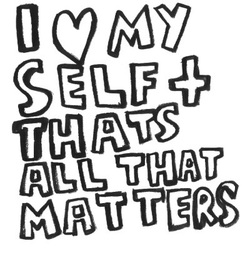
********
Have you ever stopped to think about why you’ve developed a social presence for yourself? I mean really stopped and asked, why am I doing this? Is this for me? Or is this for them? Many of us would probably answer that we are there to serve others, but, as I look at the content that is being shared, it’s pretty clear that we’re really there to fuel our ego. Unfortunately, brands are no different. We all jumped on the social wagon without a clear purpose and mission, and if we really looked deeper, we’d see it was a whole bunch of ego that led to a game of ego back-patting. You share our content; we’ll share yours. You follow me; we’ll follow you. I’ll make you the hero of our content because we are so much more superior than you, piddly follower.
Whether you are a brand or an individual with a social presence, there are some tough questions we need to ask ourselves.
How much do you promote yourself or your own content? This includes all of your status updates about your blog posts, your speaking engagements, your recent awards, your sales offers, and even that testimonial from your customer. If it’s more often than not, then ego is driving your social presence. Because if it weren’t about our ego, wouldn’t it be okay to simply go out there and help people? I mean help ridiculous amounts of people with all kinds of things that have nothing to do with us? Wouldn’t that be okay, if it weren’t all about us and what we can get out of it?
Have you ever stopped to think about why you’ve developed a social presence for yourself? I mean really stopped and asked, why am I doing this? Is this for me? Or is this for them? Many of us would probably answer that we are there to serve others, but, as I look at the content that is being shared, it’s pretty clear that we’re really there to fuel our ego. Unfortunately, brands are no different. We all jumped on the social wagon without a clear purpose and mission, and if we really looked deeper, we’d see it was a whole bunch of ego that led to a game of ego back-patting. You share our content; we’ll share yours. You follow me; we’ll follow you. I’ll make you the hero of our content because we are so much more superior than you, piddly follower.
Whether you are a brand or an individual with a social presence, there are some tough questions we need to ask ourselves.
How much do you promote yourself or your own content? This includes all of your status updates about your blog posts, your speaking engagements, your recent awards, your sales offers, and even that testimonial from your customer. If it’s more often than not, then ego is driving your social presence. Because if it weren’t about our ego, wouldn’t it be okay to simply go out there and help people? I mean help ridiculous amounts of people with all kinds of things that have nothing to do with us? Wouldn’t that be okay, if it weren’t all about us and what we can get out of it?
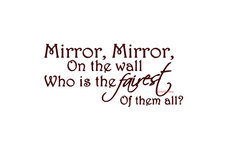
How much do you preach at your audience? These are all the posts that tell your followers what they should be doing and what they shouldn’t be doing, all wrapped in an ugly film of listen to me I know what I’m talking about. If it’s more often than not, then ego is driving your social presence. I mean honestly, how can we possibly know what our audiences should be doing? We don’t know anything about them. We certainly haven’t spent time understanding their circumstances, so why would we assume that that little formula that worked so well for us would work for them? We don’t.
How much do you focus on being a thought leader? Saying the same things everyone else is saying does not make you a thought leader So many times I’ve heard individuals and brands say, “We want to position ourselves as thought leaders in our industry.” The big question is, are you really a thought leader at all? How much do you talk about theory versus tangible results? How much real work have you actually done? What are you a thought leader in? Saying the same things everyone else is saying does not make you a thought leader. Sharing great content from others does not make you a thought leader. The real thought leaders are most likely working in the trenches, behind the shadows, and I bet you don’t even know their names. If your goal is to position yourself as anything, including a thought leader, ego is driving your social presence. In fact, the desire to be a thought leader is all ego. You want to have that pin in your cap so you can get the next promotion, the next speaking engagement, or maybe even have people recognize you in the airport. It’s 100% ego talking, and I have to say, I believe we can be so much more than that.
How much do you focus on building an audience? Why do you need an audience? What do you think an audience is going to give you? Influence? Credibility? Access? Let me ask you this: If you were helping people and had 10 followers, is it somehow better to help people and have 100k followers? I mean really, is building audience more about you or about them? If you really look and it’s more about you, then ego could be driving your social presence. Because seriously, your follower count is not an indication of your worth and the value you can bring, yet it gets so much attention. Trust me. You are worth a gazillion times more than the number of followers you have.
How much do you focus on being a thought leader? Saying the same things everyone else is saying does not make you a thought leader So many times I’ve heard individuals and brands say, “We want to position ourselves as thought leaders in our industry.” The big question is, are you really a thought leader at all? How much do you talk about theory versus tangible results? How much real work have you actually done? What are you a thought leader in? Saying the same things everyone else is saying does not make you a thought leader. Sharing great content from others does not make you a thought leader. The real thought leaders are most likely working in the trenches, behind the shadows, and I bet you don’t even know their names. If your goal is to position yourself as anything, including a thought leader, ego is driving your social presence. In fact, the desire to be a thought leader is all ego. You want to have that pin in your cap so you can get the next promotion, the next speaking engagement, or maybe even have people recognize you in the airport. It’s 100% ego talking, and I have to say, I believe we can be so much more than that.
How much do you focus on building an audience? Why do you need an audience? What do you think an audience is going to give you? Influence? Credibility? Access? Let me ask you this: If you were helping people and had 10 followers, is it somehow better to help people and have 100k followers? I mean really, is building audience more about you or about them? If you really look and it’s more about you, then ego could be driving your social presence. Because seriously, your follower count is not an indication of your worth and the value you can bring, yet it gets so much attention. Trust me. You are worth a gazillion times more than the number of followers you have.

Are you building meaningful relationships and actually helping people? Real relationships happen because two humans genuinely connect and have mutual interests Or are you instead collecting followers like baseball cards? How many people do you actually interact with online each day? Is your list of recent tweets longer than your list of recent direct messages or @ replies? If you aren’t spending more time engaging with others in a meaningful way than you are promoting yourself, then ego is driving your social presence. Real relationships happen over a series of conversations. They don’t happen because you shared a great article. They happen because two humans genuinely connect and have mutual interests. Think about how many of your followers you would take on vacation with you and your family. Not many? Exactly.
That’s a tough list to look at, isn’t it? I fully admit I am 100% guilty of many of these.
We don’t talk about it because too many of us are guilty of doing it, but maybe we should. Because if you look at what social has become, it makes you really start to question why are we here. Why is it valuable for my brand to be here? The problem with ego-driven relationships is that both sides are fighting for control and no one ever wins. It fuels a parent-child dynamic instead of a human-to-human dynamic. We aren’t all equals in a fight for control. We become ego-driven maniacs that do stupid things trying to get that next ego stroke.
Maybe it’s time to take a step back and check the ego at the door. Because maybe…just maybe…then we could become friends. Friendship is a powerful thing. If I have a choice between buying from a friend or from someone who is not a friend, I’ll choose the friend every time. And maybe that is why our brand should really be in social.
That’s a tough list to look at, isn’t it? I fully admit I am 100% guilty of many of these.
- I started using Twitter because I wanted to be a thought leader and build an audience, but admittedly, I barely use it anymore because my home feed is an ego fest, so the only thing you’ll see are a few @ replies to people who’ve reached out to me and a daily post from Social Media Explorer and Social Media Examiner. Guilty!
- I rarely comment in LinkedIn Groups. Guilty!
- I have a ton of engagement on Facebook and spend way more time commenting than I do posting. Yay! I’m not all bad.
- I authentically engage with my friends on Path in ways you won’t see anywhere else online. That’s probably because it isn’t as public, so again guilty.
- Many of my blog posts may come across as preachy. Shucks even this one probably reads that way.
We don’t talk about it because too many of us are guilty of doing it, but maybe we should. Because if you look at what social has become, it makes you really start to question why are we here. Why is it valuable for my brand to be here? The problem with ego-driven relationships is that both sides are fighting for control and no one ever wins. It fuels a parent-child dynamic instead of a human-to-human dynamic. We aren’t all equals in a fight for control. We become ego-driven maniacs that do stupid things trying to get that next ego stroke.
Maybe it’s time to take a step back and check the ego at the door. Because maybe…just maybe…then we could become friends. Friendship is a powerful thing. If I have a choice between buying from a friend or from someone who is not a friend, I’ll choose the friend every time. And maybe that is why our brand should really be in social.
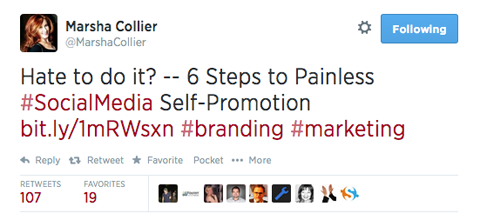
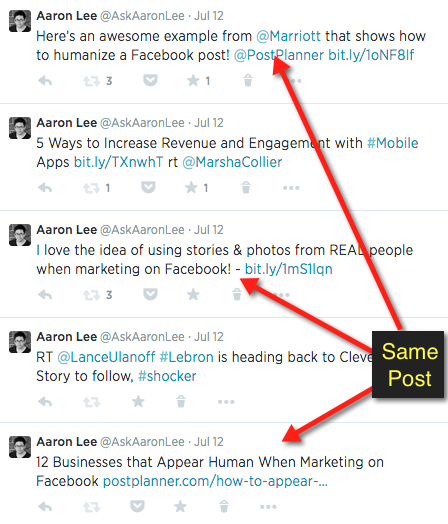
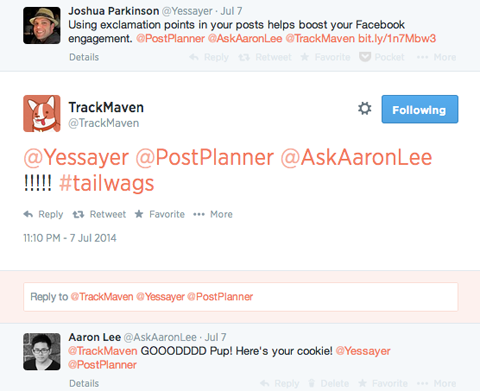
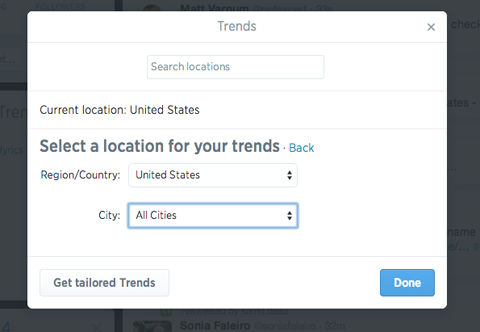
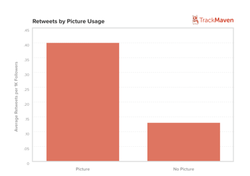
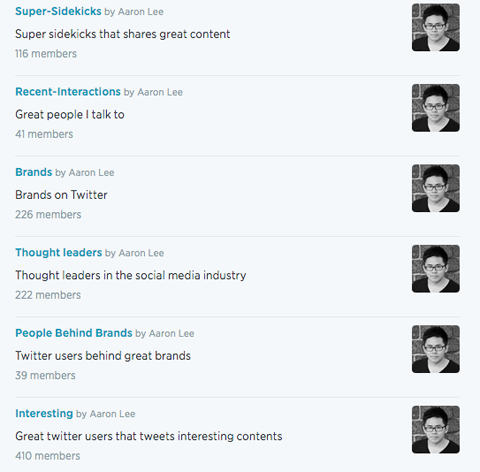
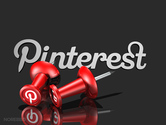



 RSS Feed
RSS Feed